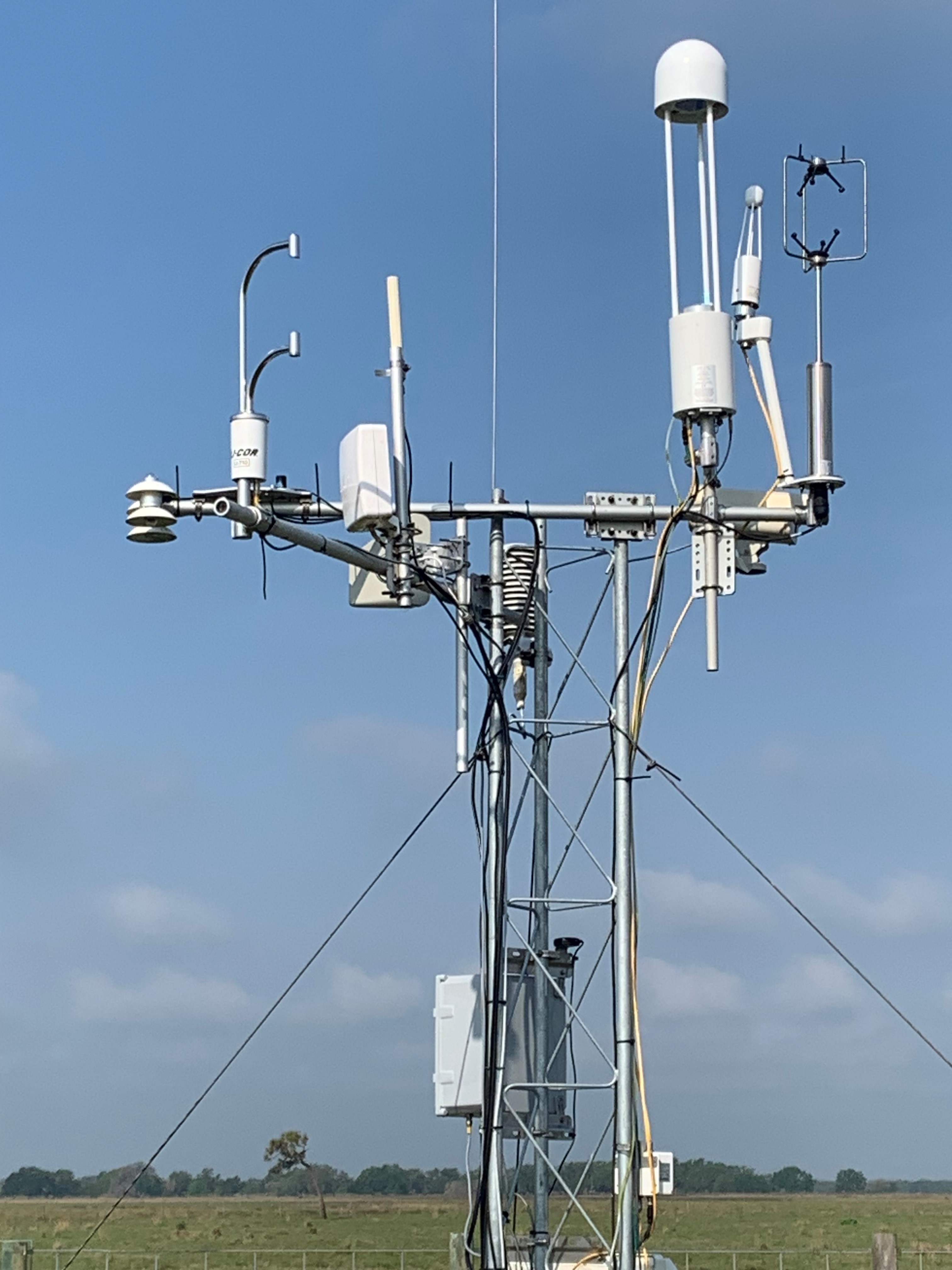Evapotranspiration in a Florida Pasture
The US-PAS AmeriFlux site, with an eddy covariance (EC) tower set up in a pasture southeast of Tampa, Florida, provides data for research on the effects of grazing on the environment.
Rosvel Bracho-Garrillo, a Principal Investigator on the tower team and faculty at the University of Florida, tested the LI-710 Evapotranspiration Sensor by installing it on the tower to compare its results with EC measurements.
“It was really easy to set up,” said Bracho-Garillo, “and we didn’t need an extra power set-up as the consumption was really low.” The only maintenance they did was to check for debris.
He also appreciates the technical support he gets from LI-COR, adding, “I always get as much time as I need to solve my problem.”
Bracho-Garillo, who has 25 years of experience with EC, carbon dynamics, and water use in a variety of ecosystems, is impressed with the LI-710 and observed a straight relationship between the LI-710 and the EC measurements.
He sees an opportunity for the LI-710 to provide better water balance projections about the water that can be provided to society. “People may have thousands of acres of land and want to know when to irrigate, for example” he said.
“ET is the second largest component in the water balance,” he said, “and people are estimating it.”
He also sees a role for direct evapotranspiration (ET) measurements at the many weather stations in water districts, noting that they need a more accurate and less expensive system to measure ET.
“People are used to basing ET models on crop coefficients as the last term in the water balance, and the error is huge,” he said, “this sensor is going to be quite an improvement.”


